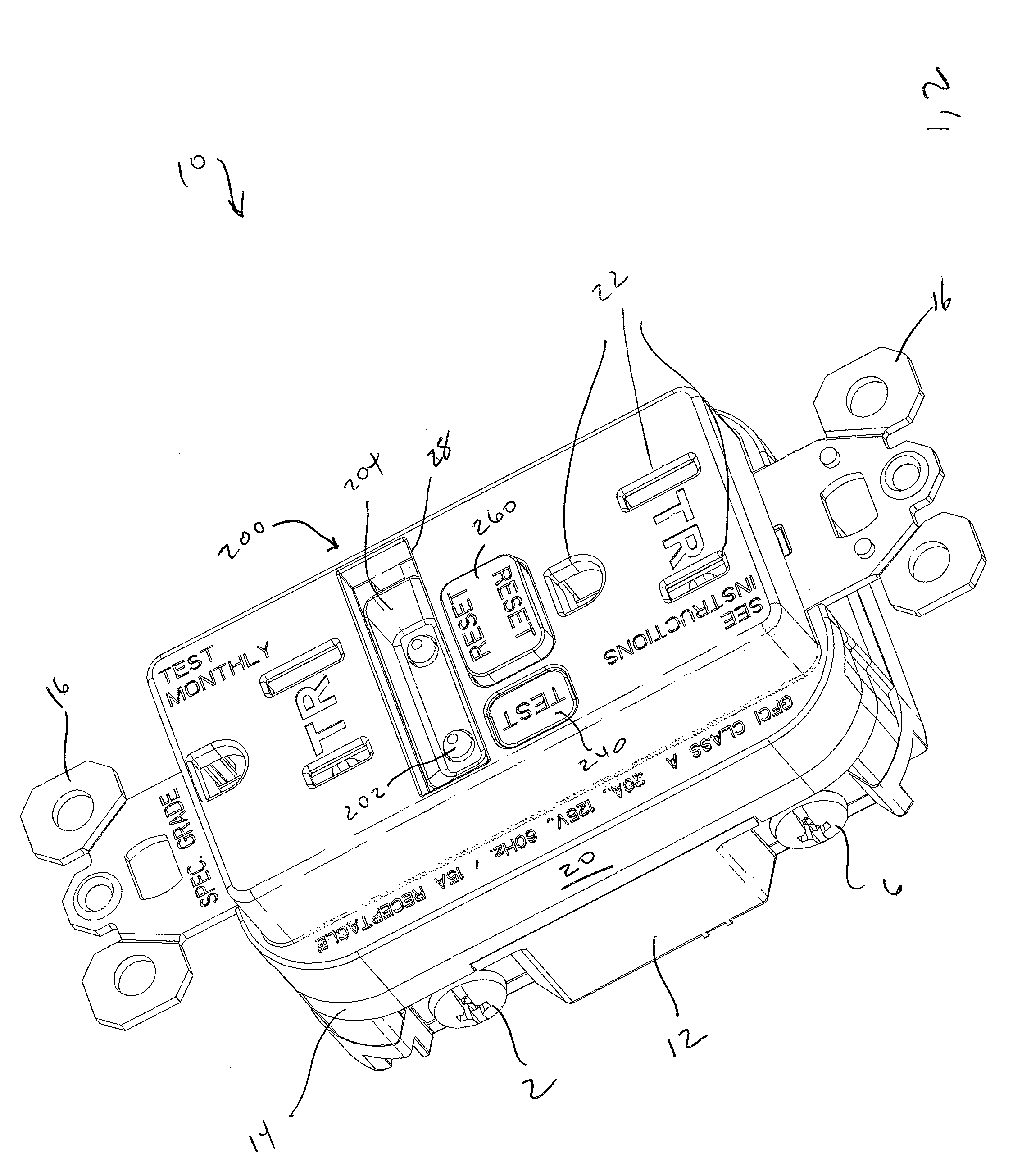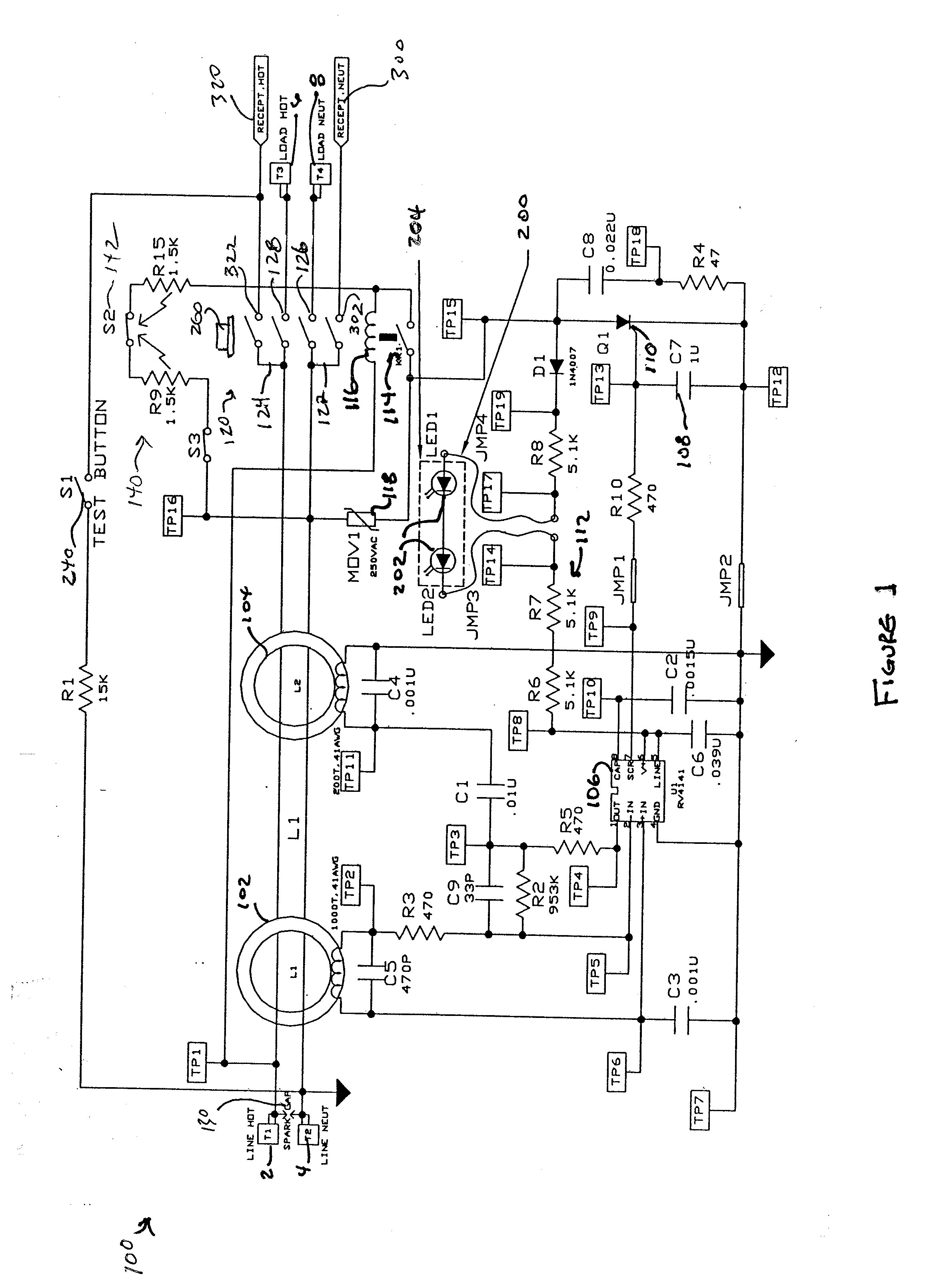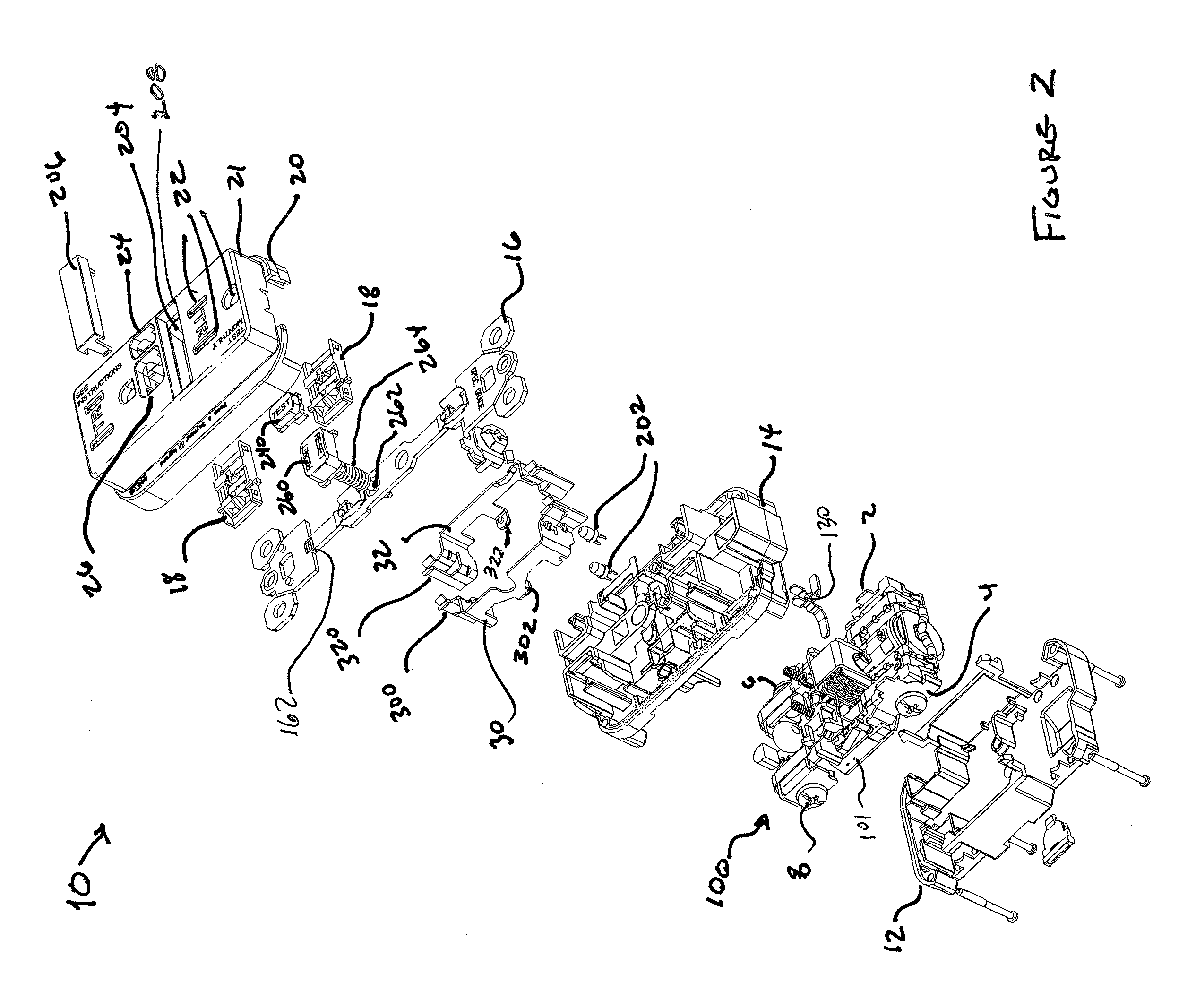Protective Electrical Wiring Device with a Center Nightlight
a technology of electrical wiring and nightlights, applied in the direction of coupling device connections, emergency protective arrangements for limiting excess voltage/current, etc., can solve the problems of electrical connectivity breakage, fire, shock or electrocution, certain types of faults known to occur in branch electric circuits and electrical wiring systems
- Summary
- Abstract
- Description
- Claims
- Application Information
AI Technical Summary
Benefits of technology
Problems solved by technology
Method used
Image
Examples
first embodiment
[0051]As embodied herein and depicted in FIG. 4, a perspective view of the shutter assembly optionally employed in the present invention is shown. Reference is made to U.S. patent application Ser. Nos. 10 / 729,685, 10 / 900,778, and 11 / 609,793, which are incorporated herein by reference as though fully set forth in its entirety, for a more detailed explanation of various embodiments of the protective shutter assembly 18. The shutter assembly may be optionally employed in any of the embodiments disclosed herein.
[0052]When assembled, the upper shutter 190 is inserted into lower shutter 170 until stop members 1920 extend beyond rail guides 1782 and snap into place. This position represents the closed position, wherein the upper transverse structure 196 covers neutral aperture 174 (not shown) and upper base 198 covers hot aperture 176 (not shown). The lower shutter member 170 and the upper shutter member 190 are movable relative to each other from the closed position to the open position i...
second embodiment
[0061]Referring to FIG. 8, a schematic of the center night light assembly 200 in accordance with the present invention is shown. As shown in FIG. 7, connection “B” is connected to the neutral receptacle terminal structure 30. The light assembly circuit 200 includes a current rectifying diode D1 in series with LEDs 202 and current limiting resistors R80, and R82. Comparing FIG. 7 and FIG. 8, it becomes apparent to those skilled in the art that the lighting assembly 200 again functions as a reset indicator. When the device is in the reset state, LEDs 202 are ON. When the device is tripped, the LEDs 202 are OFF.
[0062]FIG. 9 is an exploded view of the second embodiment of the present invention previously discussed relative to FIGS. 7-8. FIG. 9 is very similar to the exploded view previously shown in FIG. 2. Accordingly, a description of like features is omitted for brevity's sake and only the differences are explained. In the second embodiment, lens 206 has a “U-shaped” cross section si...
third embodiment
[0064]The third embodiment includes an additional indicator 150 disposed in parallel with auxiliary switch 114. As noted above, the auxiliary switch 114 is configured to open when circuit interrupter 120 is in the tripped position. If SCR 110 is shorted, or is permanently ON, auxiliary switch 114 ensures that solenoid 116 is not permanently connected to a current source. Accordingly, if reset button 260 is activated, circuit interrupter 120 resets but immediately trips in response to the trip mechanism, which in turn moves auxiliary switch 114 to the open position before solenoid 116 is able to burn out. The indicator 150 is implemented as a trip indicator, emitting a visual and / or audible indicator signal when circuit interrupter 120 is in the tripped state, i.e., when the auxiliary switch 114 is open. The trip indicator LED 150, therefore, is energized when there is power on the line terminals and the circuit interrupter is in the tripped condition. The indicator 150 is OFF when d...
PUM
 Login to view more
Login to view more Abstract
Description
Claims
Application Information
 Login to view more
Login to view more - R&D Engineer
- R&D Manager
- IP Professional
- Industry Leading Data Capabilities
- Powerful AI technology
- Patent DNA Extraction
Browse by: Latest US Patents, China's latest patents, Technical Efficacy Thesaurus, Application Domain, Technology Topic.
© 2024 PatSnap. All rights reserved.Legal|Privacy policy|Modern Slavery Act Transparency Statement|Sitemap



